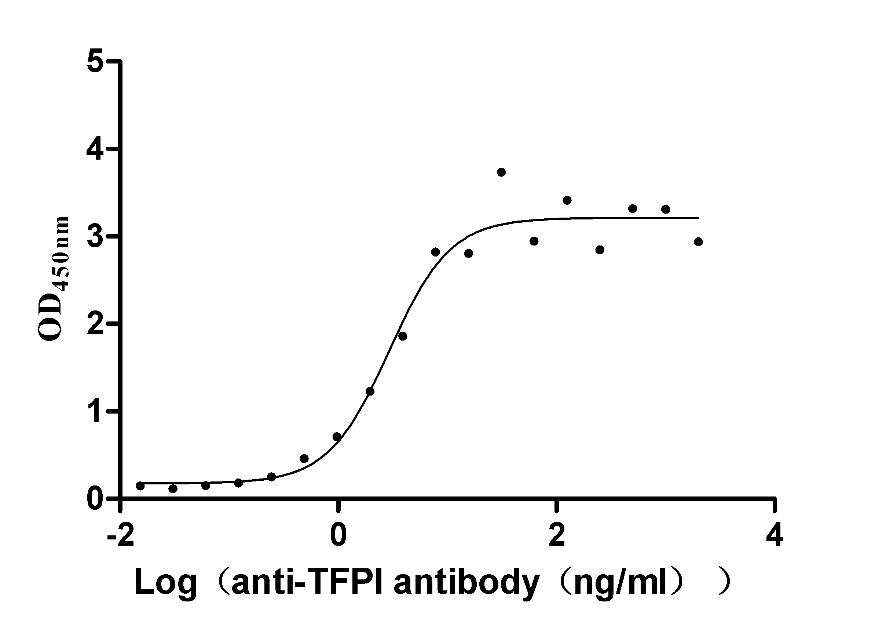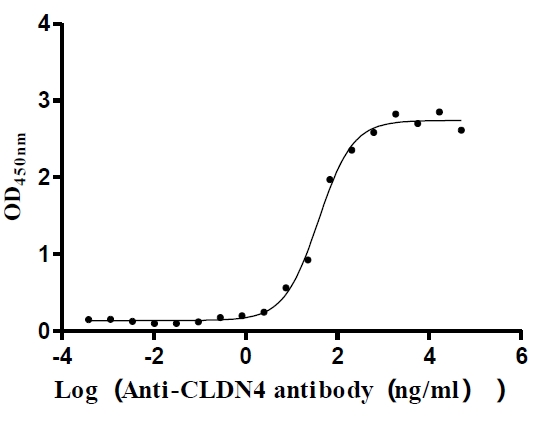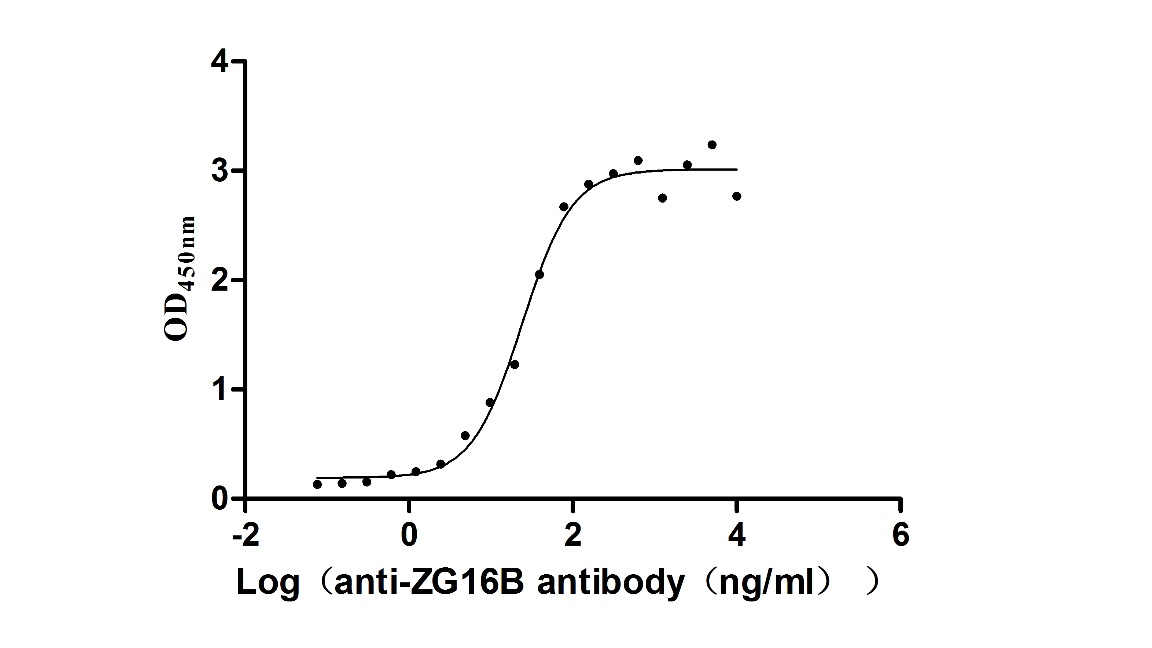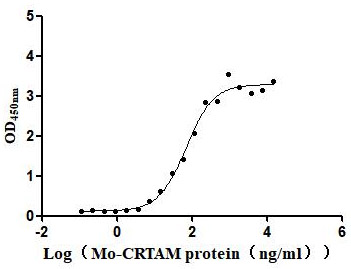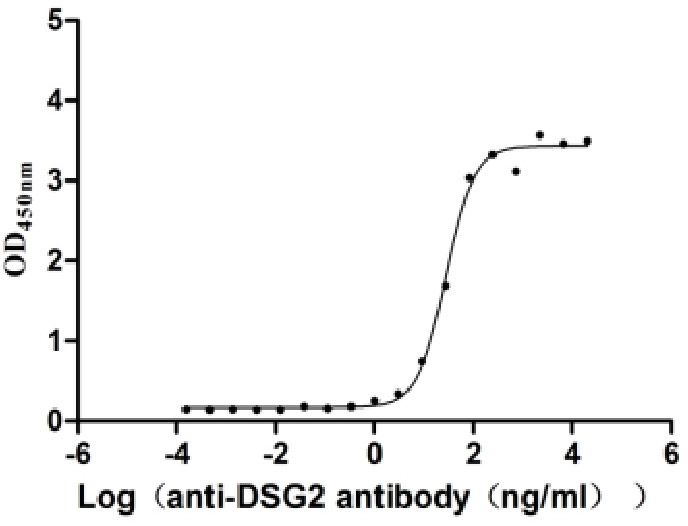Recombinant Rat G protein-activated inward rectifier potassium channel 2 (Kcnj6), partial
-
中文名稱:大鼠Kcnj6重組蛋白
-
貨號:CSB-YP012059RA1
-
規格:
-
來源:Yeast
-
其他:
-
中文名稱:大鼠Kcnj6重組蛋白
-
貨號:CSB-EP012059RA1
-
規格:
-
來源:E.coli
-
其他:
-
中文名稱:大鼠Kcnj6重組蛋白
-
貨號:CSB-EP012059RA1-B
-
規格:
-
來源:E.coli
-
共軛:Avi-tag Biotinylated
E. coli biotin ligase (BirA) is highly specific in covalently attaching biotin to the 15 amino acid AviTag peptide. This recombinant protein was biotinylated in vivo by AviTag-BirA technology, which method is BriA catalyzes amide linkage between the biotin and the specific lysine of the AviTag.
-
其他:
-
中文名稱:大鼠Kcnj6重組蛋白
-
貨號:CSB-BP012059RA1
-
規格:
-
來源:Baculovirus
-
其他:
-
中文名稱:大鼠Kcnj6重組蛋白
-
貨號:CSB-MP012059RA1
-
規格:
-
來源:Mammalian cell
-
其他:
產品詳情
-
純度:>85% (SDS-PAGE)
-
基因名:
-
Uniprot No.:
-
別名:Kcnj6; Girk2; Kcnj7; G protein-activated inward rectifier potassium channel 2; GIRK-2; BIR1; Inward rectifier K(+ channel Kir3.2; KATP-2; Potassium channel, inwardly rectifying subfamily J member 6
-
種屬:Rattus norvegicus (Rat)
-
蛋白長度:Partial
-
蛋白標簽:Tag?type?will?be?determined?during?the?manufacturing?process.
The tag type will be determined during production process. If you have specified tag type, please tell us and we will develop the specified tag preferentially. -
產品提供形式:Lyophilized powder
Note: We will preferentially ship the format that we have in stock, however, if you have any special requirement for the format, please remark your requirement when placing the order, we will prepare according to your demand. -
復溶:We recommend that this vial be briefly centrifuged prior to opening to bring the contents to the bottom. Please reconstitute protein in deionized sterile water to a concentration of 0.1-1.0 mg/mL.We recommend to add 5-50% of glycerol (final concentration) and aliquot for long-term storage at -20℃/-80℃. Our default final concentration of glycerol is 50%. Customers could use it as reference.
-
儲存條件:Store at -20°C/-80°C upon receipt, aliquoting is necessary for mutiple use. Avoid repeated freeze-thaw cycles.
-
保質期:The shelf life is related to many factors, storage state, buffer ingredients, storage temperature and the stability of the protein itself.
Generally, the shelf life of liquid form is 6 months at -20°C/-80°C. The shelf life of lyophilized form is 12 months at -20°C/-80°C. -
貨期:Delivery time may differ from different purchasing way or location, please kindly consult your local distributors for specific delivery time.Note: All of our proteins are default shipped with normal blue ice packs, if you request to ship with dry ice, please communicate with us in advance and extra fees will be charged.
-
注意事項:Repeated freezing and thawing is not recommended. Store working aliquots at 4°C for up to one week.
-
Datasheet :Please contact us to get it.
相關產品
靶點詳情
-
功能:This potassium channel is controlled by G proteins. It may be involved in the regulation of insulin secretion by glucose and/or neurotransmitters. Inward rectifier potassium channels are characterized by a greater tendency to allow potassium to flow into the cell rather than out of it. Their voltage dependence is regulated by the concentration of extracellular potassium; as external potassium is raised, the voltage range of the channel opening shifts to more positive voltages. The inward rectification is mainly due to the blockage of outward current by internal magnesium. Can be blocked by external barium or cesium.
-
基因功能參考文獻:
- The opening of ATP-sensitive K+ channels protects cardiomyocytes against the high glucose-induced injury and inflammation by inhibiting the ROS-TLR4-necroptosis pathway. PMID: 28291959
- inwardly rectifying K+ channels coupled to 5-HT1A autoreceptors display pharmacological properties generally expected for neuronal GIRK channels, but different from GIRK1-GIRK2 heteromers PMID: 26460748
- Fourteen days after axotomy, GIRK1 and GIRK2 were down-regulated in DRG neurons at the mRNA and protein levels. PMID: 26199148
- Data describe the developmental regulation and subcellular diversity of neuronal GIRK/Kir3 channels, and support the contention that distinct subpopulations of GIRK channels exert separable influences on neuronal excitability. PMID: 22098295
- Estradiol regulates dopamine-activataed GIRK channel activity in pituitary lactotrophs, regulating prolactin release during the estrous cycle. PMID: 21653876
- The mutant, Gbeta1(W332A) protein, although inactive, retains its ability to bind Kir3 and prevents the wild type Gbeta from activating the channel. PMID: 16797547
- the KCNJ6 rs2070995 AA genotype association with increased opioid requirements extends from analgesia to opiate substitution therapy PMID: 20220551
- Galpha(q) interacted with N termini of Kir3.1, Kir3.2, and Kir3.4. However, Galpha(q) did not interact with the C terminus of any Kir3 PMID: 17296805
- Data describe localization of GIRK1, GIRK2, and GIRK3 subunits and 5-HT(1A) receptor in rat brain, and their co-expression with markers of glutamatergic, gamma-aminobutyric acid (GABA)ergic, cholinergic, and serotonergic neurons PMID: 18698588
- NMDA receptor activation in cultured dissociated hippocampal neurons elevates surface expression of the GIRK channel subunits GIRK1 and GIRK2 in the soma, dendrites, and dendritic spines PMID: 19118198
- GIRK2 null mutation abolishes depotentiation of long-term potentiation PMID: 19118199
顯示更多
收起更多
-
亞細胞定位:Membrane; Multi-pass membrane protein.
-
蛋白家族:Inward rectifier-type potassium channel (TC 1.A.2.1) family, KCNJ6 subfamily
-
組織特異性:Pancreatic beta cells and brain.
-
數據庫鏈接:
Most popular with customers
-
Express system: Mammalian cell
Species: Homo sapiens (Human)
-
Recombinant Human Pro-neuregulin-1, membrane-bound isoform (NRG1), partial (Active)
Express system: Mammalian cell
Species: Homo sapiens (Human)
-
Recombinant Human Poliovirus receptor (PVR) (I340M), partial (Active)
Express system: Mammalian cell
Species: Homo sapiens (Human)
-
Recombinant Rabbit Tissue factor pathway inhibitor (TFPI) (Active)
Express system: Mammalian cell
Species: Oryctolagus cuniculus (Rabbit)
-
Recombinant Human Claudin-4 (CLDN4)-VLPs (Active)
Express system: Mammalian cell
Species: Homo sapiens (Human)
-
Recombinant Macaca fascicularis zymogen granule protein 16 homolog B (ZG16B) (Active)
Express system: Mammalian cell
Species: Macaca fascicularis (Crab-eating macaque) (Cynomolgus monkey)
-
Recombinant Mouse Cell adhesion molecule 1 (Cadm1), partial (Active)
Express system: Mammalian cell
Species: Mus musculus (Mouse)
-
Recombinant Human Desmoglein-2 (DSG2), partial (Active)
Express system: Mammalian cell
Species: Homo sapiens (Human)


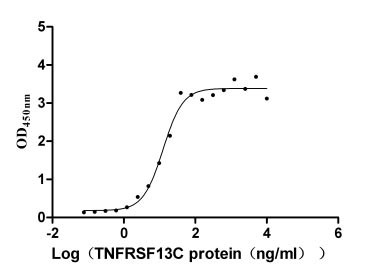
-AC1.jpg)
-AC1.jpg)
